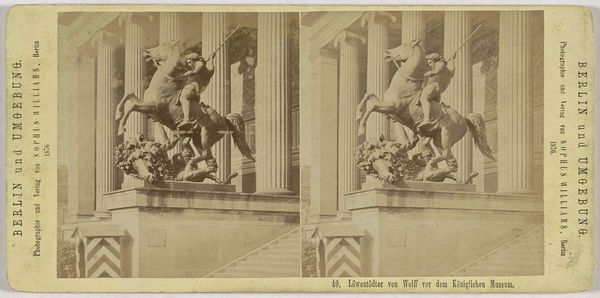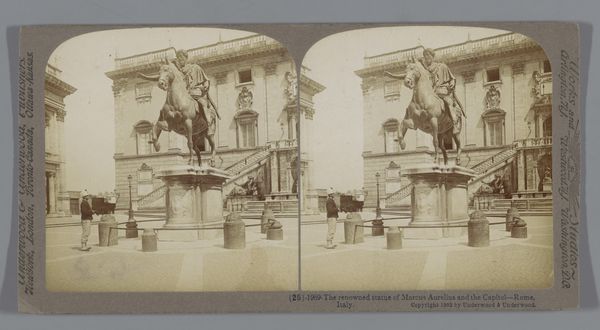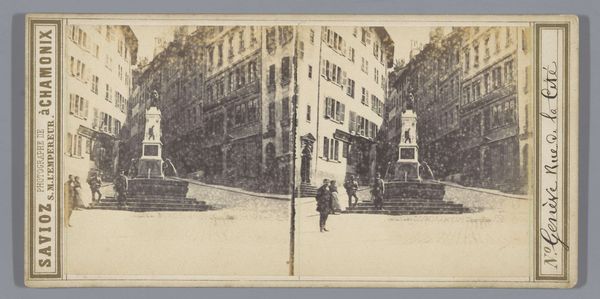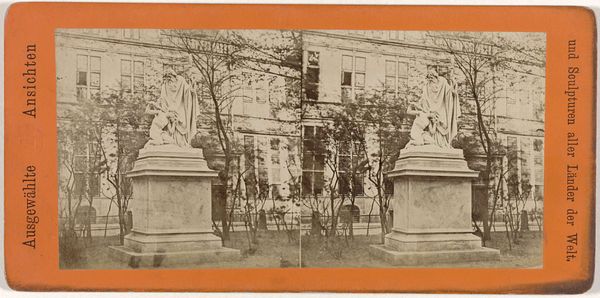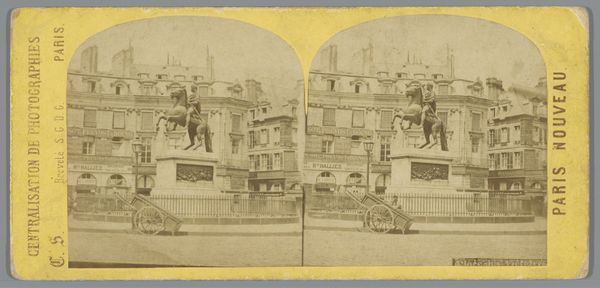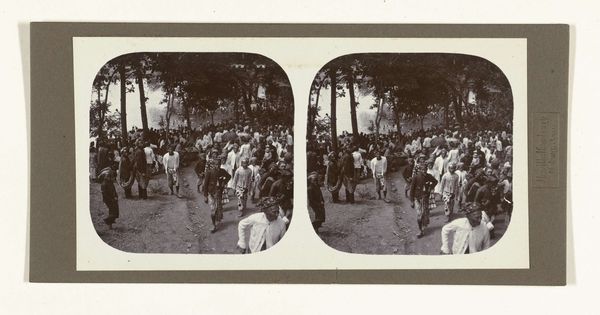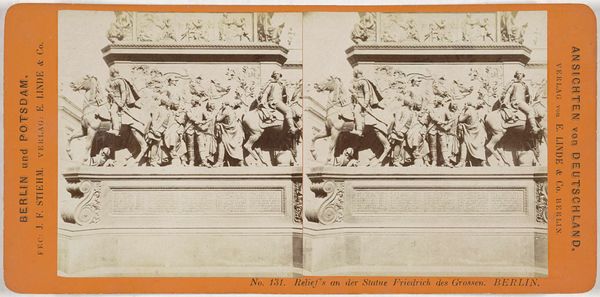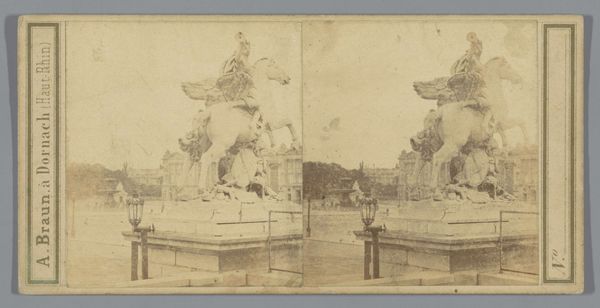
Gezicht op de Vierstromenfontein op het Piazza Navona in Rome c. 1860 - 1880
0:00
0:00
giorgiosommer
Rijksmuseum
print, photography, gelatin-silver-print
# print
#
landscape
#
photography
#
romanesque
#
gelatin-silver-print
#
cityscape
#
history-painting
#
italian-renaissance
#
realism
Dimensions: height 83 mm, width 175 mm
Copyright: Rijks Museum: Open Domain
Giorgio Sommer created this stereocard of the Fountain of Four Rivers in Rome sometime in the late 19th century. Stereocards like this one were a popular form of entertainment in Europe and North America. The fountain itself was designed by Bernini in the 17th century, during a period when the Catholic Church was eager to project its power and influence through extravagant displays of art and architecture. Fountains, in particular, served a crucial public function in Rome, providing fresh water to the city's inhabitants. Piazza Navona was not only a source of water but a social and economic hub where Romans from all walks of life gathered to buy and sell goods. Sommer's photograph flattens that complex social reality, presenting a depopulated tourist scene. As historians, we might look at city records, newspaper articles, and personal diaries to get a richer sense of the relationship between the fountain, the city, and its people. The meaning of art is contingent on social and institutional context.
Comments
No comments
Be the first to comment and join the conversation on the ultimate creative platform.
